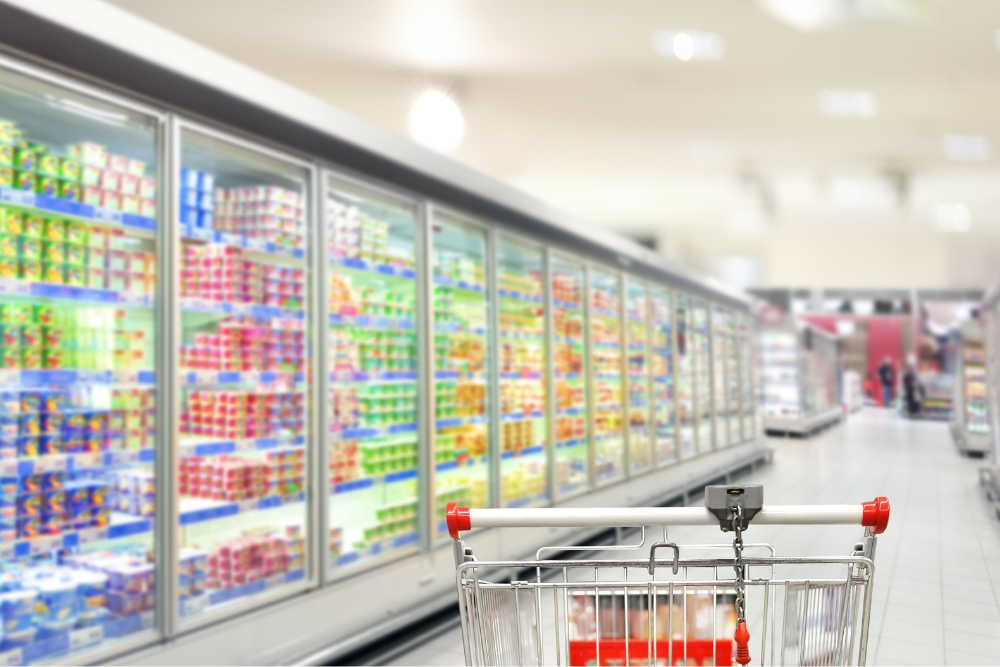Refrigeration is the lifeline of every supermarket, underpinning food safety, product shelf life, and regulatory compliance. However, it’s also one of the costliest line items, often causing the largest share of a store’s energy use. Behind every chilled aisle and frozen display case lies a constant, energy-intensive effort to keep perishable products safe, fresh, and compliant with food safety standards. That effort comes at a steep price: In a typical 50,000-square-foot supermarket, energy bills regularly exceed $200,000 a year. With energy markets in flux and an increasing number of heatwaves pushing systems to their limits, those costs are only climbing.

For an industry operating on margins that rarely exceed 2%, even modest energy savings can mean the difference between a profitable quarter and a painful one. Yet, many store operators continue to overlook a critical opportunity hiding in plain sight: optimizing the performance and efficiency of their refrigeration systems.
A Quiet Threat to Profit
In a modern grocery environment, refrigeration downtime means lost revenue and potentially lasting damage to customer trust. Losing just four hours of merchandising time on a full refrigeration rack can cost a store more than $1,200 in missed sales. Multiply that across multiple units or during high-traffic periods, and the financial impact grows fast. But not all losses stem from sudden breakdowns. Often, the real threat is the slow, quiet degradation of performance that goes unnoticed until utility bills rise or product integrity suffers.
Refrigerant leaks are a major driver of this hidden erosion. A typical supermarket refrigeration system loses around 25% of its refrigerant annually, resulting in about 1,000 pounds of refrigerant loss per site. These leaks significantly undermine cooling efficiency but can fly under the radar until energy bills creep upward, equipment starts overcompensating, or products no longer hold their chill.
Many stores also still rely on legacy refrigerants like R-404A, which have exceptionally high Global Warming Potentials that trap more heat than carbon dioxide. Using outdated refrigerants like R-404A forces systems to work harder and less efficiently, increasing energy use and exposing stores to higher costs and compliance risks.
5 Steps to Modernize Supermarket Energy Infrastructure
Supermarkets don’t need to wait for costly system failures or rising energy bills to take control of their refrigeration performance. By following this step-by-step action plan, store operators can proactively cut energy costs and build long-term operational resilience.
Step 1: Find the Leaks Before They Fail
Begin by assessing your current refrigerant containment strategy. Install real-time leak detection systems with pressure sensors placed along key refrigerant lines. These sensors can flag drops in pressure long before a walk-in fails or a case warms. In recent installations, stores using sensor-based monitoring combined with building management systems (BMS) have seen up to a 50% reduction in refrigerant leakage. Early detection prevents product loss, compressor strain, and emergency repair costs.
Step 2: Upgrade to Smarter, Lower-Impact Refrigerants
Once a leak detection strategy is in place, look closely at the refrigerants currently in use. Many supermarkets still rely on legacy options like R-404A, which trap thousands of times more heat than carbon dioxide and severely impact both the climate and compliance outlook. Transitioning to alternatives like R-448A supports more efficient compressor performance. Better yet, many of these replacements can be integrated into existing systems with minimal retrofit requirements.
Step 3: Generate Power Where You Use It
Refrigeration is one of the biggest energy draws in a supermarket, and there’s no better way to offset that load than by generating power on-site. Rooftop solar photovoltaic (PV) systems, paired with microgrid controls and battery storage, can offset 20-35% of annual electricity use. And supermarkets are uniquely positioned to scale up even further: Flat rooftops and expansive parking lots make them ideal candidates for solar carports. In some configurations, stores have reduced grid electricity use by nearly 50%, creating long-term insulation from rate hikes and grid instability.
Step 4: Clean Up Your Power Quality
Energy waste doesn’t just come from how much power you use—it also comes from how cleanly your systems draw it. Supermarkets can lose efficiency due to harmonic distortion (caused by refrigeration, lighting, and other nonlinear loads) and low power factor (when equipment draws more current than it needs). Installing active harmonic filters protects sensitive systems from overheating and boosts overall efficiency. Power factor correction equipment, like capacitor banks, reduces utility penalties and ensures the store draws only what it truly needs.
Step 5: Layer in Smarter Controls for Long-Term Gains
The final step is to connect the dots. Integrate refrigeration and energy systems under a unified control strategy using automation platforms or BMS. These platforms allow operators to monitor performance trends, automate responses to system faults, shift cooling loads based on time-of-use pricing, and prevent issues before they lead to downtime. Smart controls also enable participation in utility demand-response programs, creating additional revenue streams for stores that can flex their load when the grid is under pressure.
The Payoff
With the right combination of modern equipment, real-time leak detection, and integrated energy systems, supermarkets can do far more than just lower their power bills. By approaching refrigeration and energy management as a coordinated strategy rather than a patchwork of fixes, supermarkets can increase the reliability of critical infrastructure, prevent costly product loss, and build a more resilient operation that can withstand volatility. In an industry where margins are razor-thin, refrigeration resilience is a strategic asset and a competitive edge waiting to be claimed.
Jean-Marc Zola is the building segments president at Schneider Electric.
